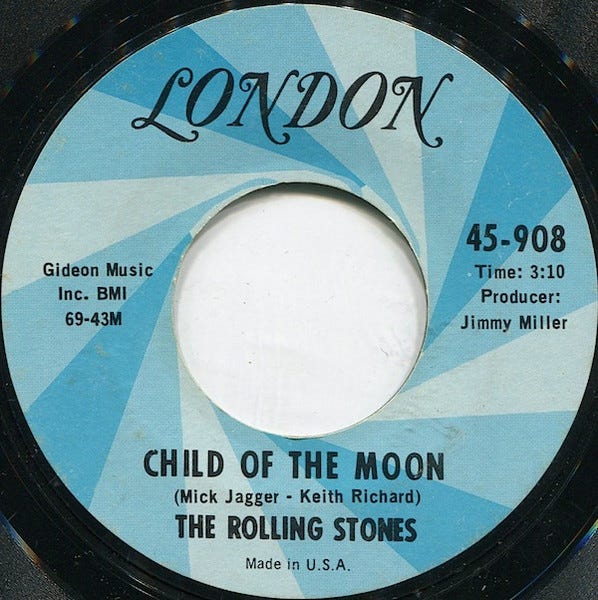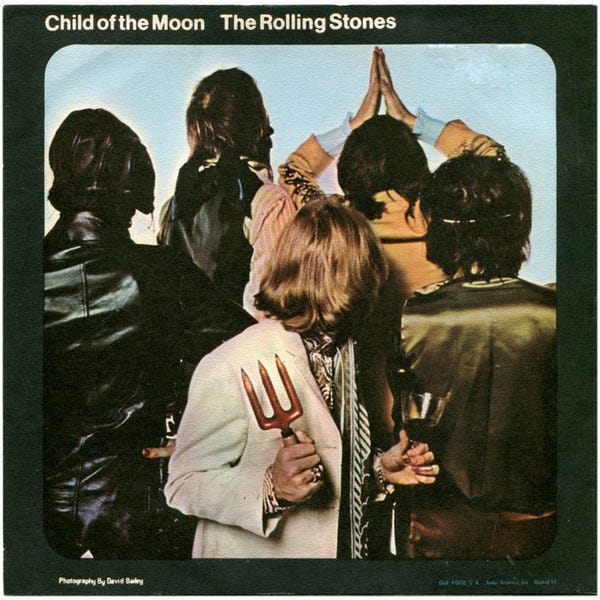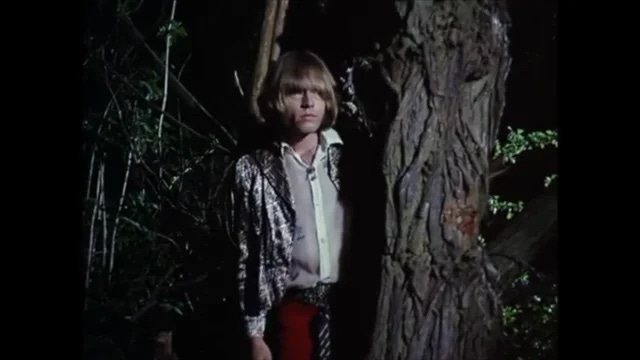Greetings and Salutations, Jagged Time Lapse readers!
Before we get into today’s groove, I have four brief but important announcements:
1) Today marks the one-year anniversary of Jagged Time Lapse! Woo hoo!!! I would like to deeply thank all of you who have come along for the ride so far, whether you’ve been here with me from the beginning, or you’ve just hopped aboard. And special thanks to the paid JTL subscribers amongst ye, who have both literally and figuratively kept the gas in my tank during the past year. I am immensely and endlessly grateful for your support.
2) If you aren’t already a paid JTL subscriber, from now until September 15 you can get 10 percent off the annual subscription rate by clicking this button:
That’s right — for only $45 a year (that’s five bucks off the regular annual price, and fifteen off a year at the monthly subscription price), you’ll get access to all kinds of entertaining JTL content that’s unavailable to free subscribers, including unpublished (or out of print) interviews with musicians, humorous stories from the music journalism wars, chapters from my musical memoir-in-progress, as well as the opportunity to occasionally vote on what you’d like me to write about next. I’m also starting to work on adding an audio angle to this Substack — so if you’re one of those folks who generally prefer to hear words rather than read them, a paid subscription will (eventually) get you exclusive missives delivered in my dulcet, soothing tones. Such a deal, right?
[Please note that, due to Substack’s not-entirely-flexible subscription set-up, this offer is unfortunately not available to current monthly or annual paid subscribers. However, if your current paid subscription runs out before September 15, I’m pretty sure you’ll be able to re-up at the discount price.]
3) Speaking of JTL polls, the results of the most recent one are in, and “Lunch with Gene Simmons” wins by several tongue-lengths. I was hoping to have that piece up for my paid subscribers this week… but as I’m still combing my not-especially-well-organized external hard drive for that 2003 interview transcript, y’all may have to wait until next week for it. It’ll be worth the wait, I promise!
4) While my monthly and annual subscription rates are low compared to a lot of Substacks out there, I know that a lot of us are struggling financially these days and can’t justify making even a small additional expenditure. So if you’re a fan of this Substack but can’t support it with a financial contribution, just sharing a favorite JTL post — whether new or from the JTL Archives — on social media, or even just with a friend who might also dig it, would be doing me an enormous solid, as well. I’m trying hard to spread awareness about this here thang, and every little bit of additional “word of mouth” really helps!
All right then — on with the show (good health to you)!
The first whiffs of autumn in the Shawangunk Mountains air inspired me to pull out The Rolling Stones’ Their Satanic Majesties Request the other day. Like all music from the original British psychedelic era, this 1967 album sounds best to me during the fall months, when watching the afternoon shadows lengthen from the vantage point of my couch with a nice mug of cocoa my hands, a cat or two on my lap and some mind-expanding lysergic weirdness emanating from my speakers feels like a particularly appealing pastime.
As a nascent Stones fan circa 1980, I learned pretty quickly that Satanic Majesties was the album I wasn’t “supposed” to like. “Look,” went the prevailing wisdom of the time, “they’re ripping off Sgt. Pepper’s on the cover. The Stones were just trying to cash in on psychedelia, and there’s nothing from it on Hot Rocks, so how good could it possibly be? Thankfully they went back to rock n’ roll on Beggars Banquet!”
I avoided the record accordingly for about half a decade, until I realized around 1985 that the Stones’ psychedelic period had actually produced some pretty adventurous (and in many cases legitimately great) music. My ticket to this particular ride came via a friend’s copy of More Hot Rocks, specifically the incredible six-song stretch of “Have You Seen Your Mother Baby, Standing in the Shadow?,” “Dandelion,” “We Love You,” “She’s a Rainbow,” “2000 Light Years from Home” and “Child of the Moon”.
These songs all exuded a fabulously compelling combination of whimsy, menace and druggy decadence, plus you could really “hear” the green velvet trousers. I was sold — and almost immediately went out and bought Satanic Majesties, figuring that any album containing both “She’s a Rainbow” and “2000 Light Years from Home” had to have some other gems hidden away on there, as well.
I was not incorrect in this assumption; in fact, over the years, Satanic Majesties has slowly but firmly lodged itself among my Top 5 favorite Stones LPs. (The other four being Between the Buttons, Beggars Banquet, Sticky Fingers and Exile on Main St., with the UK version of Aftermath trying to wedge itself in alongside them.) Sure, not everything on Satanic Majesties totally works, and it’s undeniably “of its time” (not that I have any problem with that), but I genuinely love most of the album’s tracks and their vibrant sense of exploratory wonder. The Stones weren’t trying to imitate The Beatles here, any more than they were trying to imitate Muddy Waters at this point; they were simply trying to forge new ground by blending a wide array of musical and medicinal influences, and — naysayers notwithstanding — they largely succeeded.
I’ve often thought that the only real improvement that could have been made to Satanic Majesties was for the band to ditch the eight and a half meandering minutes of “Sing This All Together (See What Happens)” and put the non-LP single sides “Dandelion” and “We Love You” at the end of Side One instead — and, since there would have still been a little leftover room to play with, end the side with “Child of the Moon”. Except, of course, it would have been impossible to add “Child of the Moon” to the album; contrary to what some Satanic Majesties outtake bootlegs imply, the song doesn’t actually derive from the Satanic Majesties sessions. The album, produced by the band themselves with Glyn Johns as engineer, was released in December 1967; “Child of the Moon,” though it certainly sounds like a holdover from Satanic Majesties, wasn’t recorded until March 29, 1968, with producer Jimmy Miller at the helm.
There’s a whole lotta things I love about the song itself — and we’ll get to those in a second — but I’m also endlessly fascinated by the peculiar place that “Child of the Moon” occupies in the Stones’ discography. Released in May 1968 as the B-side of “Jumpin’ Jack Flash” (and unavailable anywhere else until the release of More Hot Rocks four and a half years later), the song is quite literally the transition point between the band’s psychedelic period and their “back to basics” movement embodied by “Jumpin’ Jack Flash” and Beggars Banquet. While “Child”’s simple, acoustic-strummed chord progression could be considered a harbinger of the folk- and blues-influenced material to come, little else about the recording would have fit comfortably on Beggar’s Banquet. That landmark album is raw, brash and straightforward, but “Child of Moon” is enchantingly murky; its lyrics and music can be difficult to decipher, and yet the recording keeps me coming back to explore its myriad mysteries…
The beginning of the song resembles nothing else from the band’s catalog: a feedback drone, a ringing suspended chord that sounds like it’s heralding an impending royal proclamation, and a voice (Miller’s) that sounds like the village wino howling angrily down an empty cobblestone street at 3 in the morning. It’s only when the loping beat kicks in — Charlie Watts for the win, as always — that you realize it’s the Stones, a realization further bolstered by the unmistakable sound of Mick Jagger’s voice.
This isn’t the strutting, barking, lip-flapping Jagger we hear, though — the performance here is closer to his more melodic vocal turns on earlier songs like “Dandelion” or “Backstreet Girl,” only far less mannered. His heartfelt, soulful delivery backs up the oft-penned notion that “Child of the Moon” was written as a love song to Marianne Faithfull. But there’s also something prayerful about his singing here; it sounds almost like a pagan incantation, especially when he leans hard into the droning harmonies of the verses. And then there are the evocative lyrics, which hint at something deeper and more mystical — maybe even more occult — than your typical paisley-swathed love song.
She shivers by the light she is hidden
She flickers like a lamp lady vision
Child of the moon
Rub your rainy eyes
Child of the moon
Give me a wide awake crescent shaped smile
Jimmy Miller’s impenetrable mix further deepens the sense of mystery and allure. Is that a Hammond organ on the verses? Is Bill Wyman playing a fuzz bass? For decades, I thought the horns on the chorus were trumpets, until further reading revealed that it’s actually Brian Jones on soprano saxophone. But even if you can’t fully identify or pick apart all the instruments, everything somehow coheres beautifully into something both pastoral and powerful — even on the instrumental bridge where the bass, organ and guitars all sound like they’ve received completely different marching orders. And it’s all wrapped up at the end by Keith Richards’ little modal guitar figure that sounds like a time-traveling preview of the first two R.E.M. albums. Is it my favorite Stones song? These days, I’d probably have to say yes.
And yet… the band simply moved on from there, never to record anything like “Child of the Moon” again. I dearly wish that they’d continued in this moody, psychedelia-tinged vein (and in fact gone even deeper into it) for one more album before returning to what Brian Jones described as their “funky essence,” but it wasn’t to be. Still, the Stones clearly thought enough of the song to hire Michael Lindsay-Hogg to direct a promotional video for it.
The clip, in which the three females of vastly different ages (perhaps representing the same person in different stages of her life) encounter the band members in a forest, is even harder to interpret than the song. While it has been criticized by some viewers for giving off “rape-y” vibes, the “Child of the Moon” video feels much more to me like something out of an English folk-horror tale, with the band members as elemental spirits who take human form in order to wordlessly warn intruders not to go any further into the woods.
Back in 2018, I had the pleasure of interviewing Tony Richmond, who served as the cinematographer on the video shoot — a gig which led to him working on Jean-Luc Godard’s avant-garde Stones film Sympathy for the Devil, as well as The Rolling Stones’ Rock and Roll Circus. While we spoke mostly about the Godard project (and I’ll be reproducing that interview in full here sometime in the future), Richmond did share some memories of the “Child of the Moon” shoot and how he ended up working on it.
“What happened was,” he explained, “the first movie I shot was a movie called Only When I Larf, and that movie was written and produced by Len Deighton, and directed by Basil Deardon. A couple of months after the end of the movie, they had to shoot a title sequence. And this title company called me and said, ‘Look, we’re using David Hemmings, he’s the star of the movie, and we feel you should shoot the titles.’ And the guy directing the titles was a television director who was trying to get into commercials — the title company also did commercials — named Michael Lyndsay-Hogg.
“So we did three or four days of shooting the titles, and he and I got on really well. When we were finishing, he said, ‘What are you doing next Saturday? You want to come and shoot a video for me for the Rolling Stones?’ So we shot ‘Jumping Jack Flash’ on one day, and on the second day we shot the B-side, ‘Child of the Moon,’ which was quite extraordinary — we put them up in trees and dressed them up as American Indians. It was wonderfully bizarre…
“Brian Jones was lovely. I went out for a drink with him a couple of times, and he was a really, really nice young man. When we did ‘Jumping Jack Flash’ and ‘Child of the Moon,’ we shot ‘Jumping Jack Flash’ on a Saturday and ‘Child of the Moon’ we shot on a Sunday on this farm, right on the edges of London — very close to where I lived as a kid, and as a young man, before I moved into the city. And there was a pub there that I used to drink in, The Robin Hood, so I thought I’d go over after the shoot and have a drink there. Brian said, ‘Where are you going?’ I said, ‘The Robin Hood.’ He said, ‘Oh, can I come with you?’
“And I remember sitting there with him, it was about 5 o’clock on a Sunday, and we ordered a couple of pints. The barmaid said to Brian, ‘Oh my god, can I please have your autograph? It’s for my daughter.’ And he said something like, ‘Yeah, I’ll give it to you, but I’m not such a good guy.’ Because of the drugs and all the other things. But he was absolutely charming.”









Dan, you live in the 'gunks? I envy you! Left Plattekill some years ago, and miss it much. Used to blast '60s music and not disturb the neighbors...
I love that Brian Jones story.